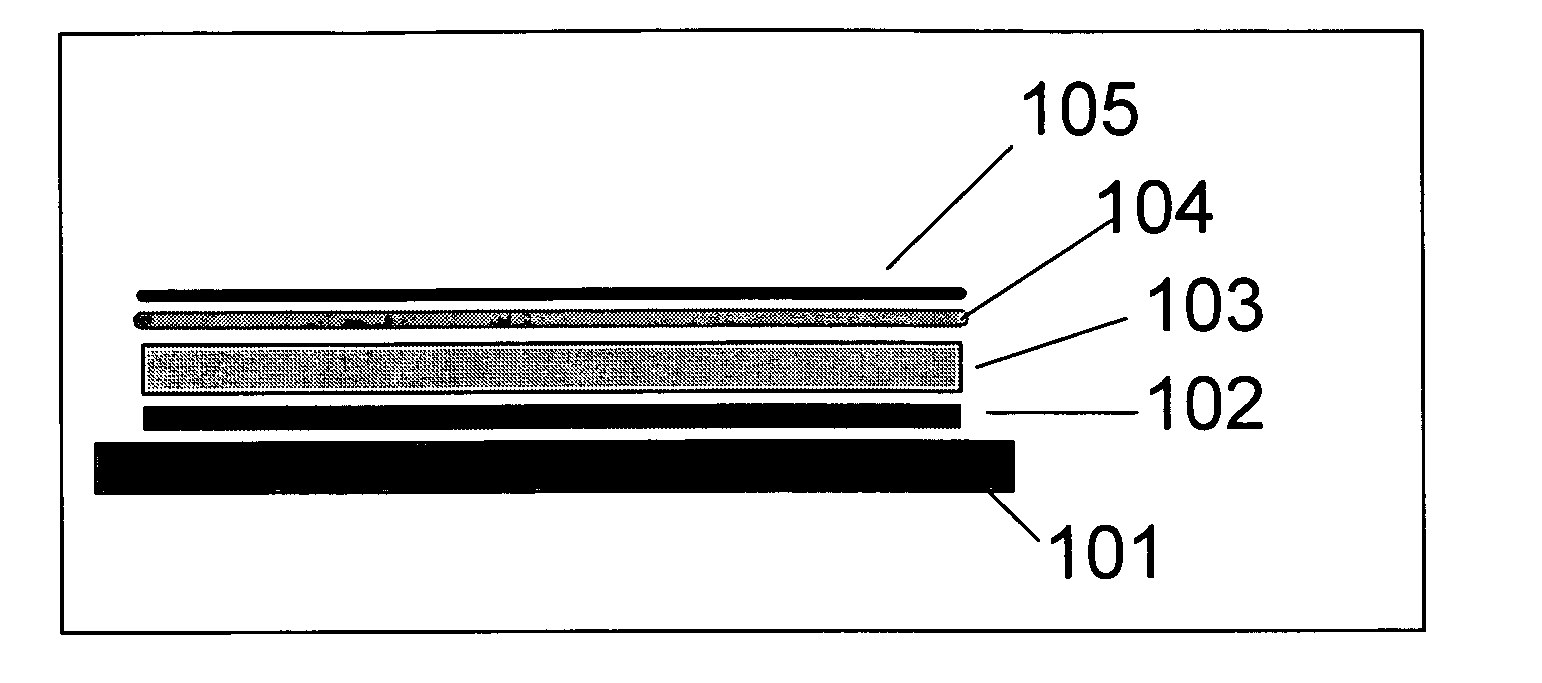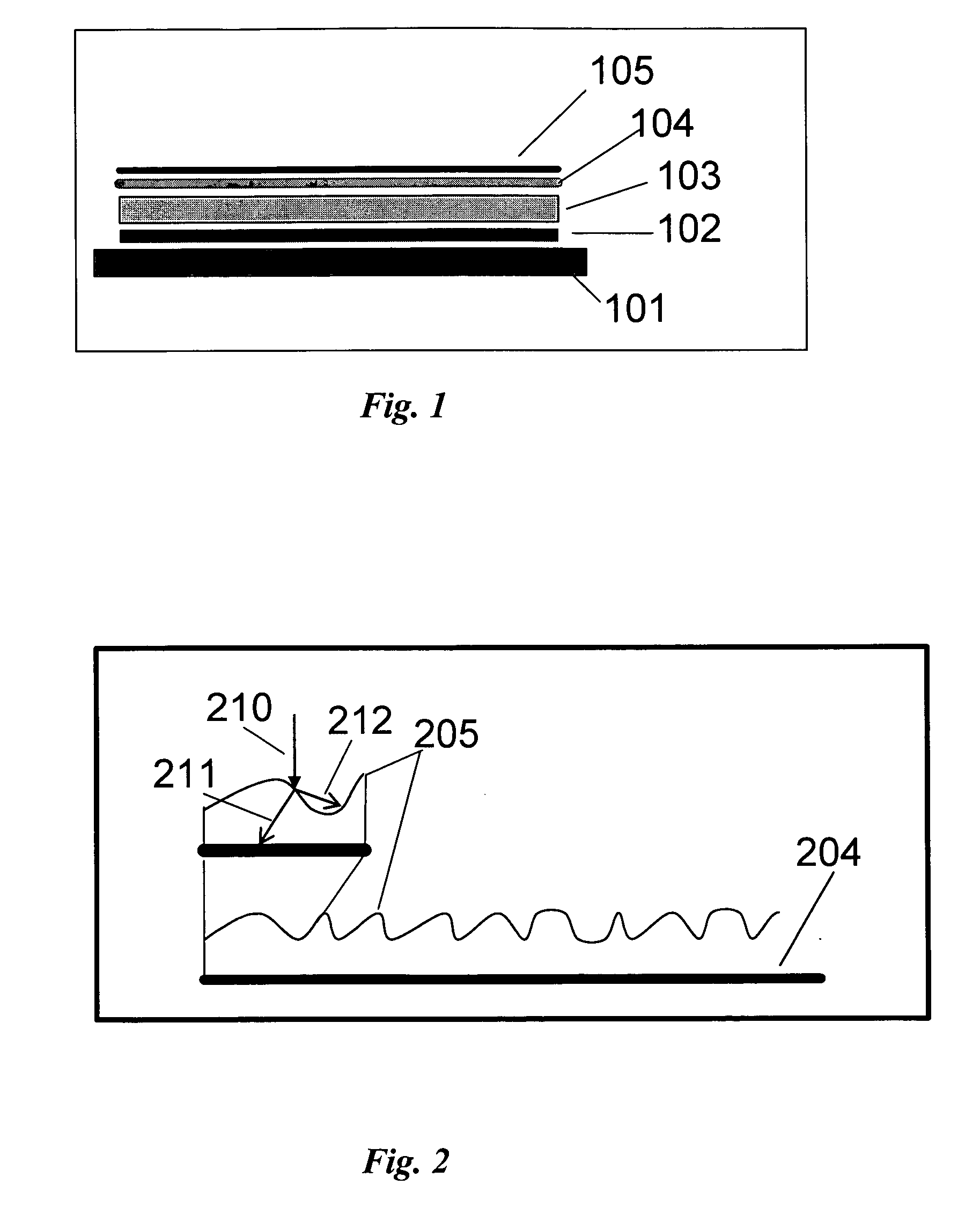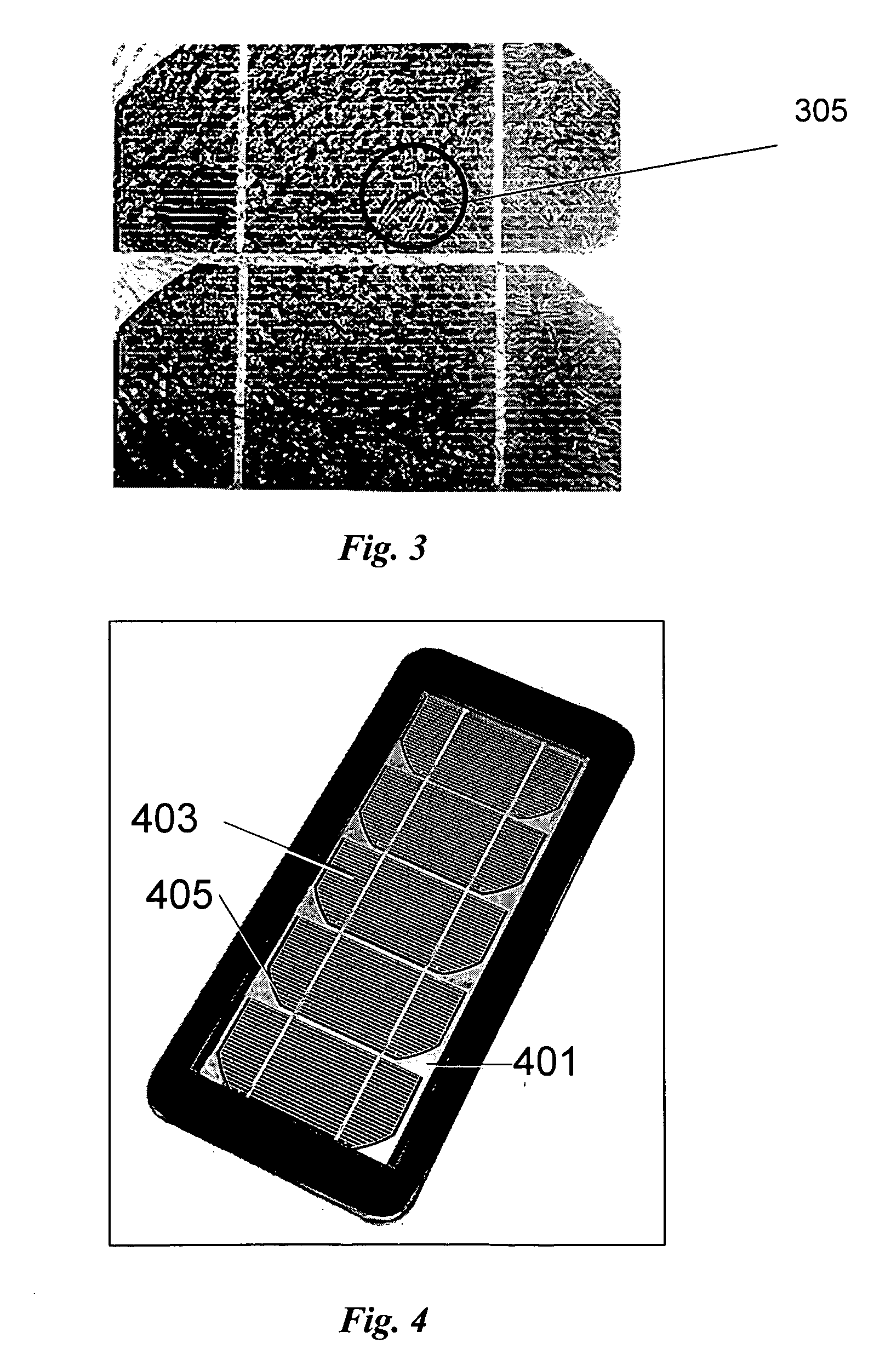Photovoltaic Module
a photovoltaic module and photovoltaic conversion technology, applied in the direction of pv power plants, semiconductor devices, coatings, etc., can solve the problems of limited efficiency of pv modules laminated with glass, complex manufacturing of glass coverings, and inability to efficiently transmit light in the uv portion of the spectrum, so as to improve weathering and environmental properties, high conversion efficiency, and high optical transparency
- Summary
- Abstract
- Description
- Claims
- Application Information
AI Technical Summary
Benefits of technology
Problems solved by technology
Method used
Image
Examples
example 1
[0060]Three photovoltaic modules were made using the present invention. Aluminum sheeting that was anodized for forming the insulating layer was used as the substrate onto which the back of the photovoltaic converter was affixed.
[0061]The flexible optical transparent cover was made of a modified epoxy-urethane and includes the antistatic additives. The flexible optically transparent cover on the front-face surface of the photovoltaic cell, which was coated with ITO, was made by flowing the initial solution based on epoxy-urethane onto the front-face surface of the photovoltaic cell so as to form the crinkle coat surface morphology.
[0062]Results from tests on the three photovoltaic modules according to the present invention are shown in Table 1 below.
[0063]Modules 5C and 4C consists of solar cells based on the polymer materials and technology according the presented invention. The surface morphology for these modules is flat.
[0064]The front-face surface of the photovoltaic cells was ...
example 2
[0067]The SuperPoly module (far right column in Table 1) consists of two solar cells according to the presented invention. The surface for this module is a relief or “crinkle coat” surface morphology. The conditions of the test where the same as for Example 1. The power of the light was 1000 W / m2. The current density for this module under these conditions was 55 mA / cm2. Under these lighting conditions the concentrator effect of the crinkle coat plays a significant role
example 3
[0068]Three photovoltaic modules were made using the present invention.
[0069]The preparing and coating of the polymer film on the light-facing surfaces of the photovoltaic cells was carried out in the following steps:
[0070]1. Preliminary preparing of the oligomer. A mixture of the polyethyleneglycoladipinat with a molecular weight of 800 and the hexamethylendiisocyanate was used.[0071]The mass ratio between the polyethyleneglycoladipinat and hexamethylendiisocyanate was 2:5.4-6.6[0072]The temperature during mixing was 60-70° C.[0073]The duration of mixing was 35-40 minutes
[0074]2. Preparation of the hardener. As a hardener, a mixture of trimethylpropane and butenediol was used. The mass ratio between trimethylpropane and butenediol was 9.5:0.5.
[0075]3. Preparing the mixture of the oligomer and hardener. The mass ratio between oligomer and hardened was 100:3.4-4.5.[0076]The hardener was added to oligomer, which was pre-heated to 55-65° C.[0077]The mixture of the oligomer and hardened...
PUM
| Property | Measurement | Unit |
|---|---|---|
| Fraction | aaaaa | aaaaa |
| Fraction | aaaaa | aaaaa |
| Length | aaaaa | aaaaa |
Abstract
Description
Claims
Application Information
 Login to View More
Login to View More - R&D
- Intellectual Property
- Life Sciences
- Materials
- Tech Scout
- Unparalleled Data Quality
- Higher Quality Content
- 60% Fewer Hallucinations
Browse by: Latest US Patents, China's latest patents, Technical Efficacy Thesaurus, Application Domain, Technology Topic, Popular Technical Reports.
© 2025 PatSnap. All rights reserved.Legal|Privacy policy|Modern Slavery Act Transparency Statement|Sitemap|About US| Contact US: help@patsnap.com



